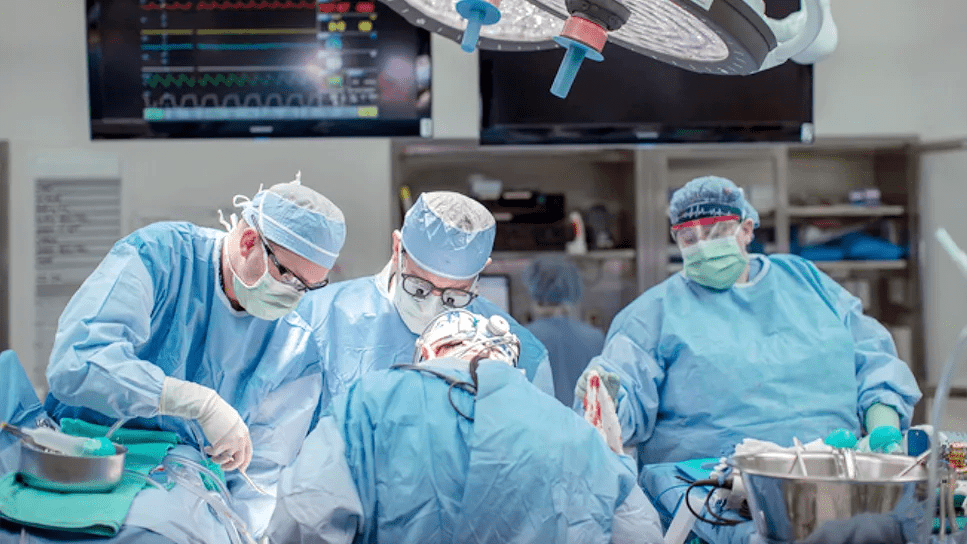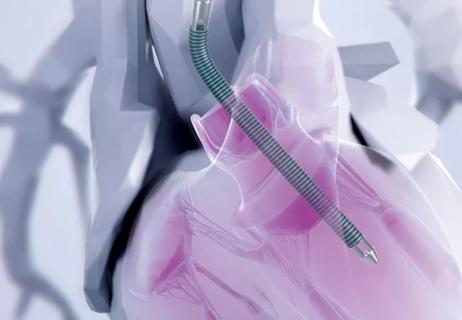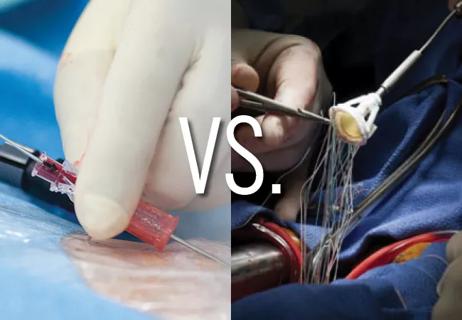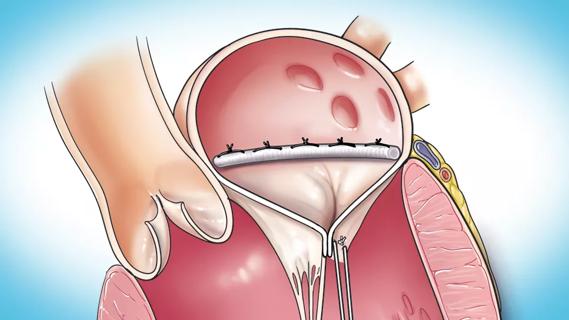Cleveland Clinic series finds favorable long-term results with this high-risk operation

Patients with failed repair of a post-myocardial infarction (MI) ventricular septal rupture (VSR) can be considered for a second repair; although complications commonly occur, most patients can expect a good outcome from re-repair. So finds an analysis of 38 patients who underwent the rarely performed procedure at Cleveland Clinic (JTCVS Tech. 2024 Epub 30 Oct). Favorable results were especially associated with operations that took place in recent years and in non-acute circumstances.
Advertisement
Cleveland Clinic is a non-profit academic medical center. Advertising on our site helps support our mission. We do not endorse non-Cleveland Clinic products or services. Policy
“Post-MI ventricular septal rupture is a rare but highly fatal condition,” says study co-author Michael Tong, MD, MBA, Director of Cardiac Transplantation and Mechanical Circulatory Support at Cleveland Clinic. “Emergency surgery historically carries a 40% mortality rate, and those who survive have a risk of patch dehiscence and residual leak due to the necrotic tissue condition in the heart. However, with access to advanced perioperative care in the modern era, we achieved 90% postoperative survival and 64% survival at 10 years. Yet because this surgery is complex and perioperative complications are common, we recommend that it be performed at an expert center.”
Literature reports of VSR recurrence after initial repair range from 10% to 44%, either due to incomplete repair or later failure. Although a significant shunt is an important indicator of poor prognosis, fewer than half of patients with VSR recurrence ultimately undergo this high-risk reintervention. Many patients are not given the option; aside from the risks of the surgery, optimal timing of the reintervention is unclear.
Few data are available characterizing the presentation and outcomes of patients who undergo re-repair of a post-MI VSR. This study, using Cleveland Clinic data over a nearly 50-year period, is the largest single series published on the topic.
The study analyzed 38 consecutive patients who underwent re-repair of a post-MI VSR at Cleveland Clinic between 1976 and 2023. The indication for all re-repairs was the presence of a hemodynamically significant shunt, diagnosed either at the time of initial repair or during postoperative follow-up.
Advertisement
The median age at re-repair was 64 years. Half of patients were followed for at least five years, 25% for more than 12 years and 5% for more than 20 years. Just over half the patients underwent their initial repair at Cleveland Clinic.
Patient details at baseline included the following:
Perioperative circulatory support at the time of re-repair was as follows:
The primary endpoint was operative mortality (i.e., death within 30 days). This occurred in 12 patients (32%) overall. Further analysis revealed that mortality was 56% (10/18) among patients who underwent surgery before January 2001 versus 10% (2/20) among those who underwent surgery from January 2001 onward.
Advertisement
Postoperative complications included renal failure (21%), stroke (16%), deep sternal wound infection (8%) and reoperation for bleeding (8%). Two patients had a small (< 1 cm diameter) recurrent VSR on the second postoperative day, but these recurrences were deemed hemodynamically insignificant and required no further intervention.
Long-term survival was most favorable among patients who had re-repair after January 2001: 85% at one year, 79% at five years and 64% at 10 years.
No patient received advanced therapy — e.g., a durable left ventricular assist device or heart transplant — during follow-up.
“Re-repair of a VSR can be performed safely, offering patients with a recurring hemodynamically significant shunt an important life-extending treatment option,” Dr. Tong observes.
However, he believes that having the surgery done at a tertiary or quaternary center with experience treating such patients is likely critical to achieving the outcomes seen in this study.
Conditions that favor better outcomes for re-repair appear to be the same as those for an initial repair, Dr. Tong notes. These include improved preoperative hemodynamic and end-organ stability, good myocardial tissue quality, and elective or urgent intervention on a stable patient rather than emergency surgery.
“If a patient is unstable at presentation, they should be stabilized with mechanical circulatory support prior to surgery,” Dr. Tong says. “The ideal time to go to surgery is beyond two weeks after the MI, to allow for increased fibrosis of the septum to improve durability. Patients who develop or are discovered to have a residual ventricular septal rupture may undergo elective surgery. Surgery for recurrent or residual rupture may involve performing the ventriculotomy again or can be done through the right atrium across the tricuspid valve. The approach depends on the size and location of the lesion.”
Advertisement
He recommends routine imaging and clinical monitoring of patients after repair of post-MI VSR so that reintervention can be undertaken before the patient becomes hemodynamically unstable. “As recurrence tends to happen early, patients should receive an echo within one week of the initial repair and again at three months and one year,” Dr. Tong says. “Recurrence or residual VSR should be identified early, and cases leading to significant hemodynamic impact should be addressed before irreversible ventricular damage occurs.”
“Advances in cardiothoracic surgery, structural intervention and temporary mechanical circulatory support have led to improved treatment options for the most vulnerable patients with hemodynamic instability,” adds cardiologist Venu Menon, MD, who directs Cleveland Clinic’s cardiac intensive care unit. “Our ability at an experienced quaternary center to improve the prognosis of patients with residual ventricular septal defects after initial correction of a ventricular septal rupture serves to highlight this progress.”
Advertisement
Advertisement

Transvalvular LVAD support transforms emergency surgery into urgent procedure

BITA grafts themselves are rarely to blame, and outcomes can be good

TVT Registry analysis could expand indication to lower surgical risk levels

Medical and surgical perspectives on current and emerging uses of ECMO and Impella

Surgeons credit good outcomes to experience with complex cases and team approach

Questions remain following late mortality signal from a retrospective cohort study

Preoperative Impella 5.5 placement can provide a critical safety net for high-risk patients

Cleveland Clinic series supports re-repair as a favored option regardless of failure timing